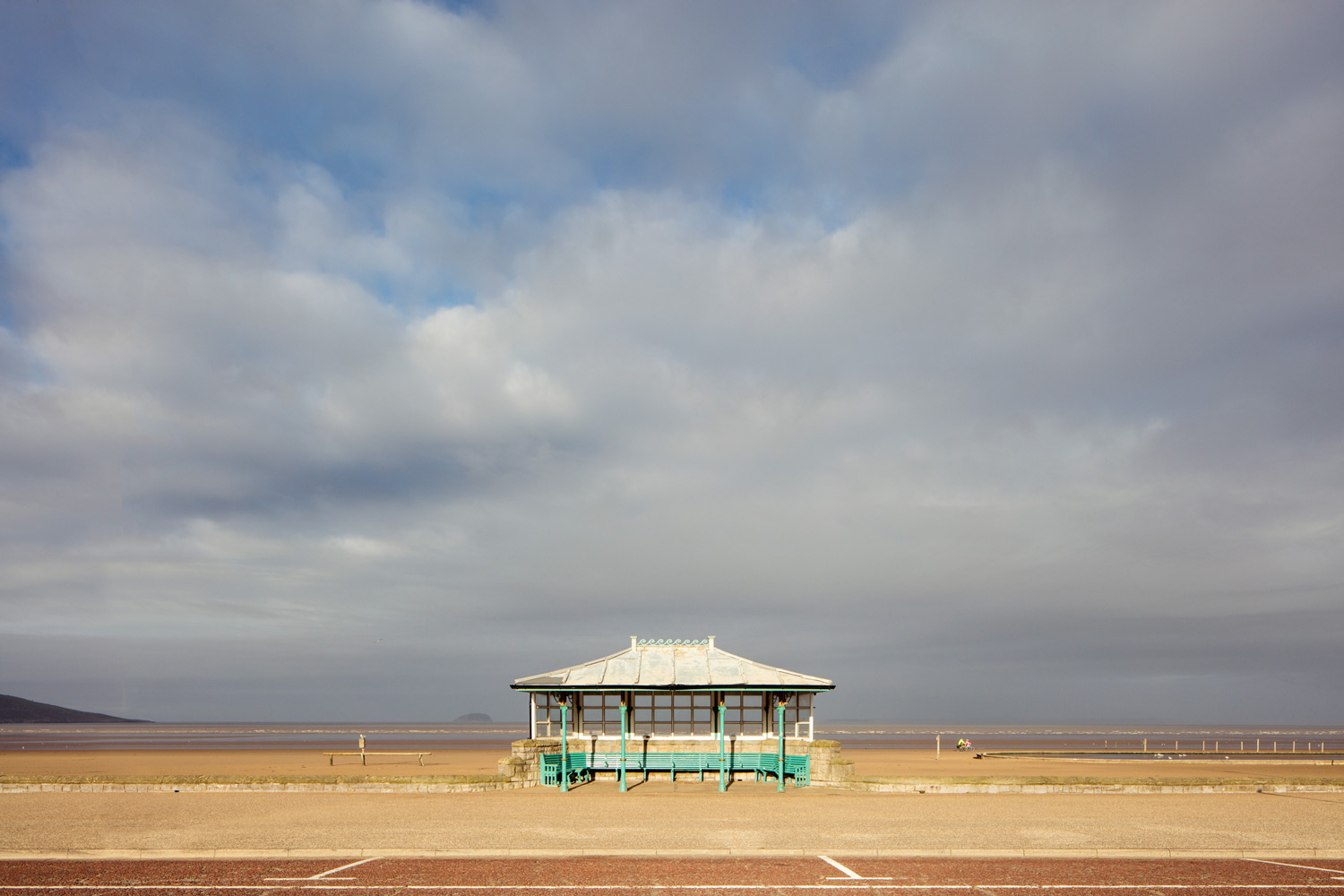Shooting the faded glory of Britain’s seaside shelters
- Text by Niall Flynn
- Photography by Will Scott

Picture the scene:
You, your entire family and at least three inflatables, packed like sardines into a four-door saloon, hurtling down the motorway on your way to the beach. The sun’s shining, there’s not a cloud in the sky and your sister’s well on her way to being off her head on travel sweets. Life’s grand.
Except, of course, when you get there, it rains. It rains like its angry. A biblical kind of rain, so nasty and relentless that you forget what it was like to ever feel truly safe. Your sister is crying. You want to go home, but your parents won’t budge. “Well, we’re here now,” says your mum, resolute as the wind shakes the car. “We might as well try and enjoy it.”


Chances are, if you grew up in the British Isles, the fated trip to the seaside is something you know all too well. It’s a rite of passage: journeying across the country to find a beach, only to get there and moan about the weather.
For photographer Will Scott, Britain’s relationship with its seaside towns has always been a point of fascination. Raised in North Berwick, Scotland, he’d grown up witnessing it first-hand. However, it was only stumbled across some images of beach shelters – bygone structures, built to protect holidaymakers from the elements – that he saw the opportunity for a project.
“I knew straight away it would work as a series and when I realised it hadn’t been done before, I made a list and started shooting them,” he explains. “I think the fact that they are so small – and often one-offs – makes them really interesting individually, as they are so unique. And as a set, it’s fascinating seeing the differences between eras and towns.”


Over the course of three years, Scott travelled across Britain, hopping from town to town. Today, the photos make up Seaside Shelters, a book (and accompanying exhibition) that maps his journey via the structures he shot.
For him, the structures depict a faded glory: a time when urban development didn’t answer to a grand plan, and where one person find themselves responsible for shaping the aesthetic of an entire town’s seafront. Above all, though, the project is an ode to the Great British holiday – rain and all.


“In an age when much of our urban built environment is becoming more uniform I think its important to recognise the places that are retaining their own character and I think that the shelters often do reflect ‘their’ towns,” Scott adds. “Brits love to moan about the weather, too hot, too cold, too wet – and the shelters existence is based on the UKs changeable weather.”
“I remember going on family holidays, always [in] the UK, and it didn’t really matter what the weather forecast was. If you decided you were going to the beach, you went. I shot it with a similar mindset!”



 Seaside Shelters is available now from HENI Publishing.
Seaside Shelters is available now from HENI Publishing.
The exhibition is showing at HENI Gallery from 20 July – 19 August, 2018.
Enjoyed this article? Like Huck on Facebook or follow us on Twitter.
You might like

In Medellín’s alleys and side streets, football’s founding spirit shines
Street Spirit — Granted two weeks of unfettered access, photographer Tom Ringsby captures the warmth and DIY essence of the Colombian city’s grassroots street football scene.
Written by: Isaac Muk

Remembering New York’s ’90s gay scene via its vibrant nightclub flyers
Getting In — After coming out in his 20s, David Kennerley became a fixture on the city’s queer scene, while pocketing invites that he picked up along the way. His latest book dives into his rich archive.
Written by: Miss Rosen

On Alexander Skarsgård’s trousers, The Rehearsal, and the importance of weirdos
Freaks and Finances — In the May edition of our monthly culture newsletter, columnist Emma Garland reflects on the Swedish actor’s Cannes look, Nathan Fielder’s wild ambition, and Jafaican.
Written by: Emma Garland

Why Katy Perry’s space flight was one giant flop for mankind
Galactic girlbossing — In a widely-panned, 11-minute trip to the edge of the earth’s atmosphere, the ‘Women’s World’ singer joined an all-female space crew in an expensive vanity advert for Jeff Bezos’ Blue Origin. Newsletter columnist Emma Garland explains its apocalypse indicating signs.
Written by: Emma Garland

Katie Goh: “I want people to engage with the politics of oranges”
Foreign Fruit — In her new book, the Edinburgh-based writer traces her personal history through the citrus fruit’s global spread, from a village in China to Californian groves. Angela Hui caught up with her to find out more.
Written by: Angela Hui

We are all Mia Khalifa
How humour, therapy and community help Huck's latest cover star control her narrative.
Written by: Alya Mooro

